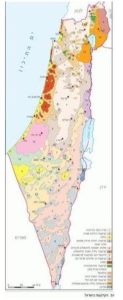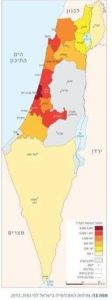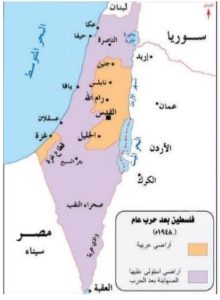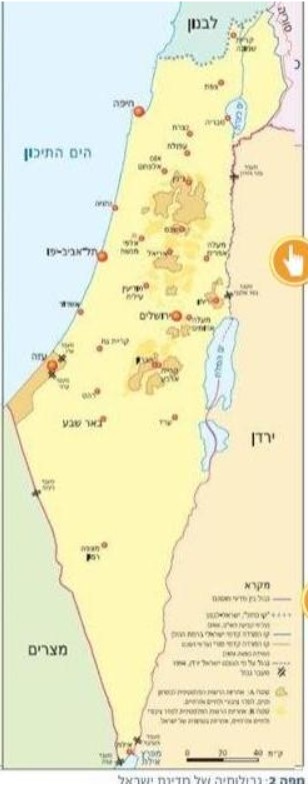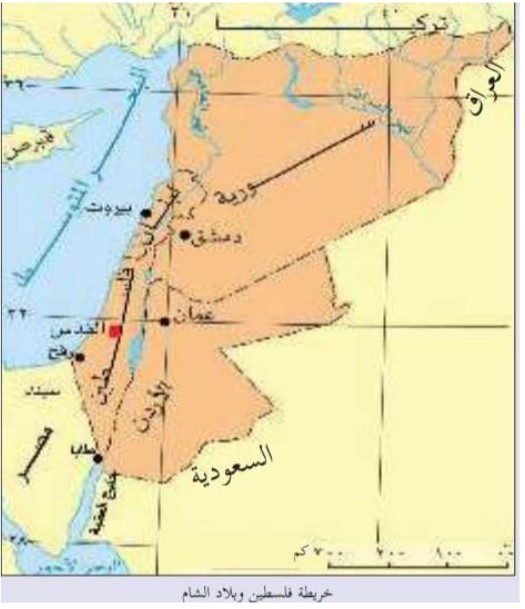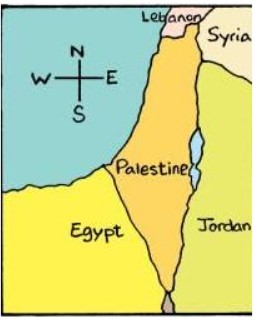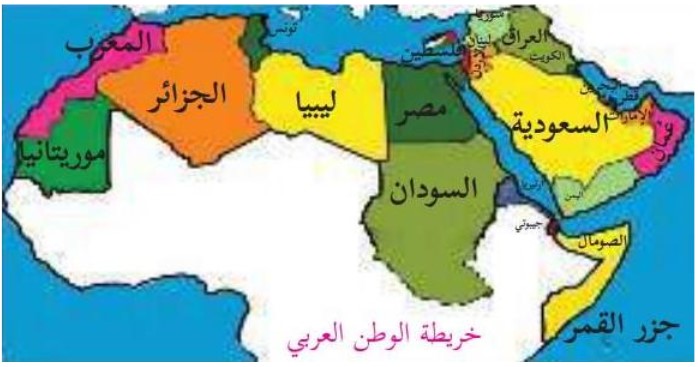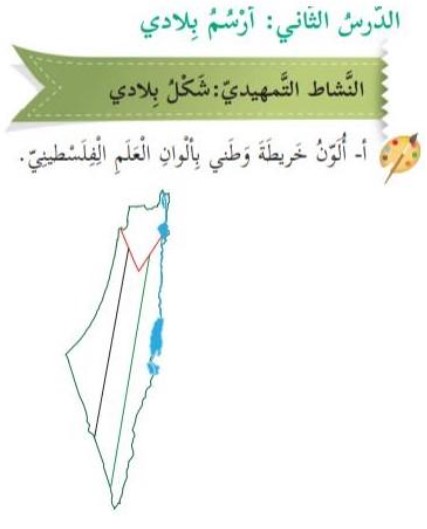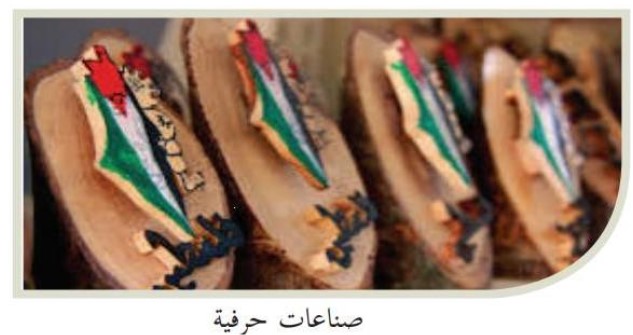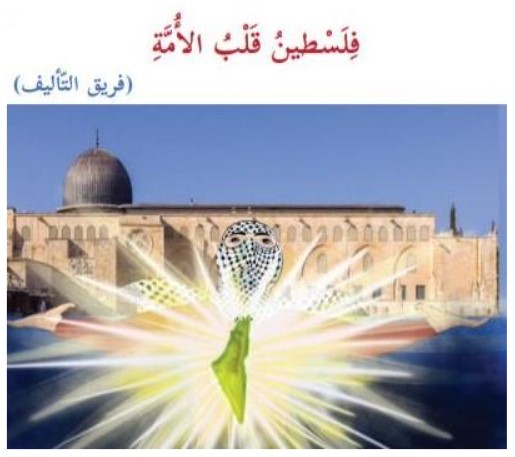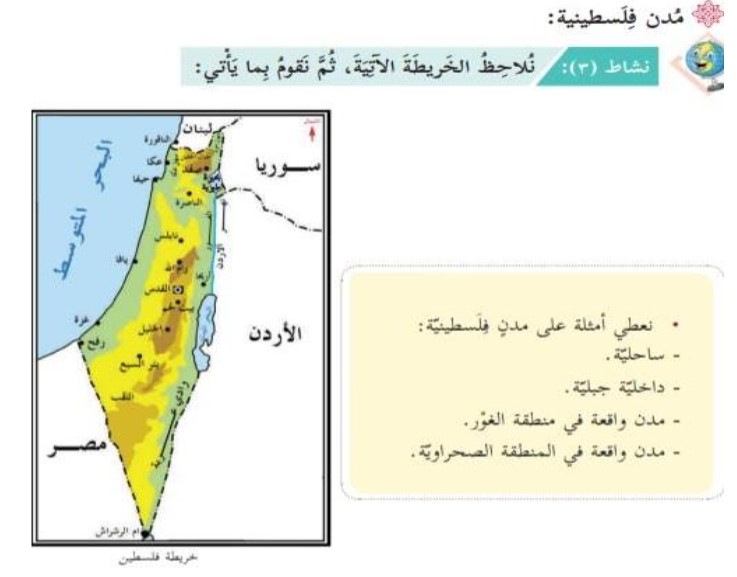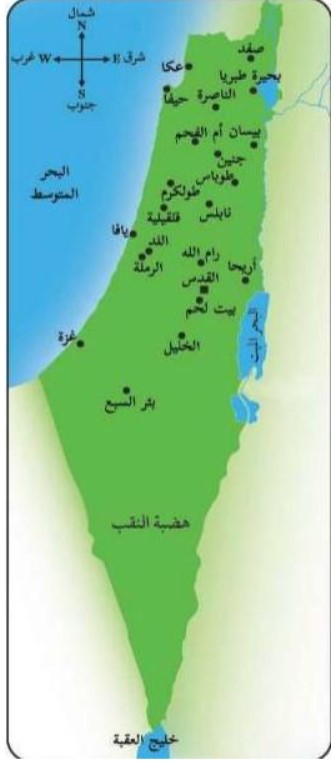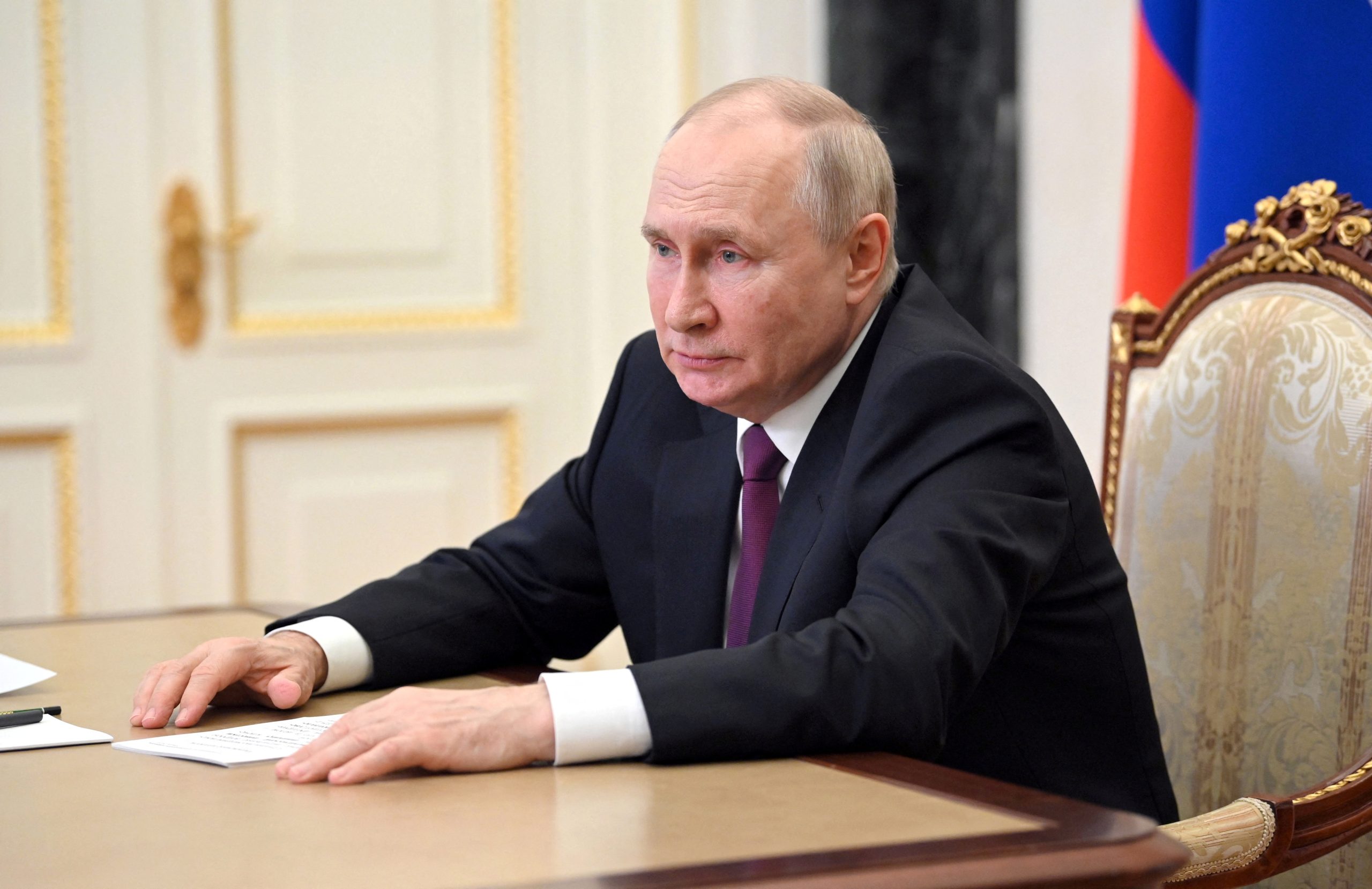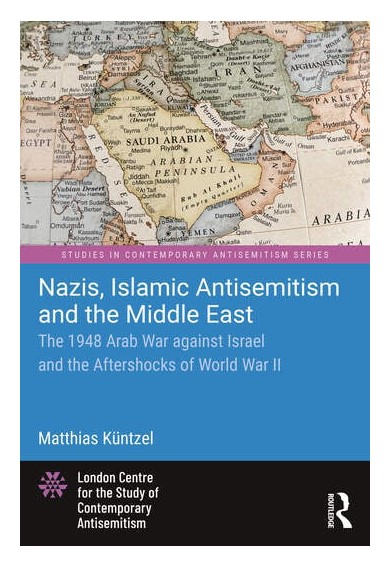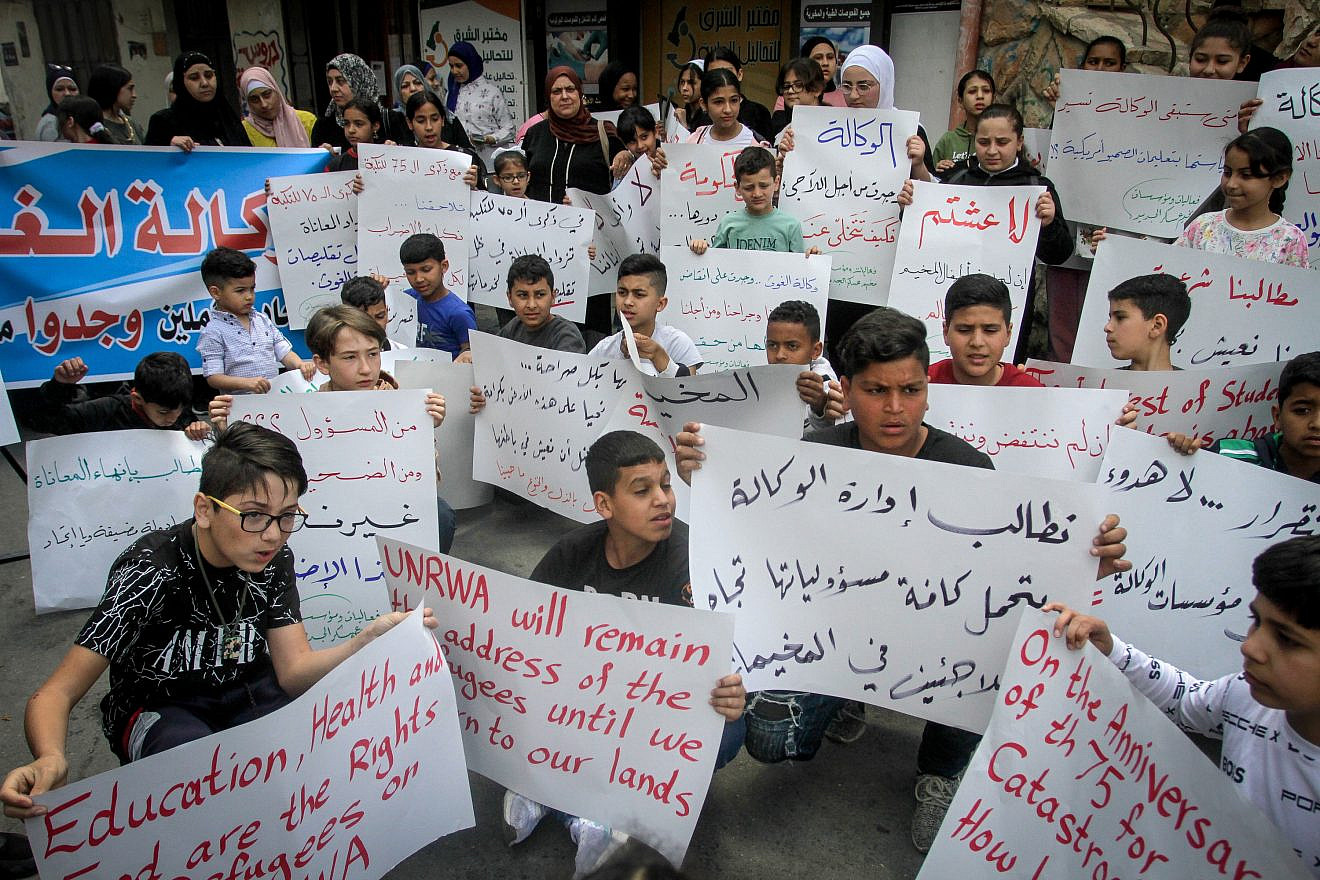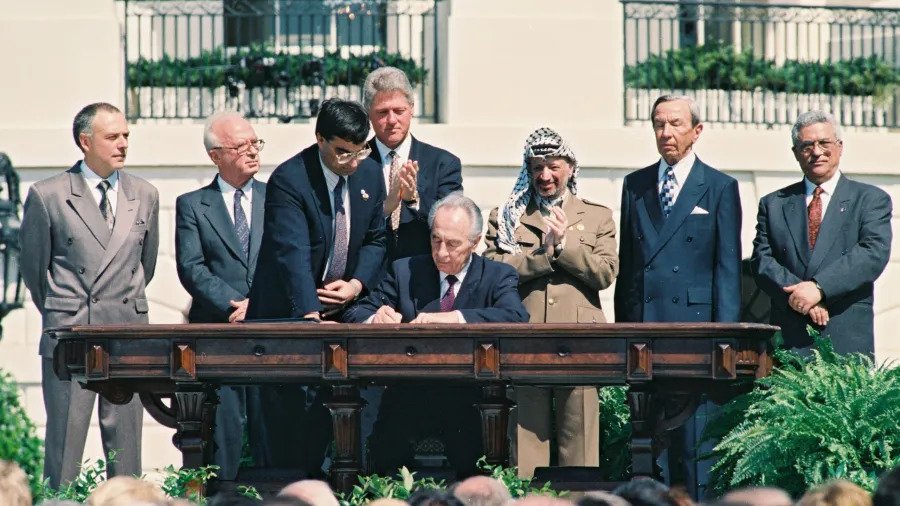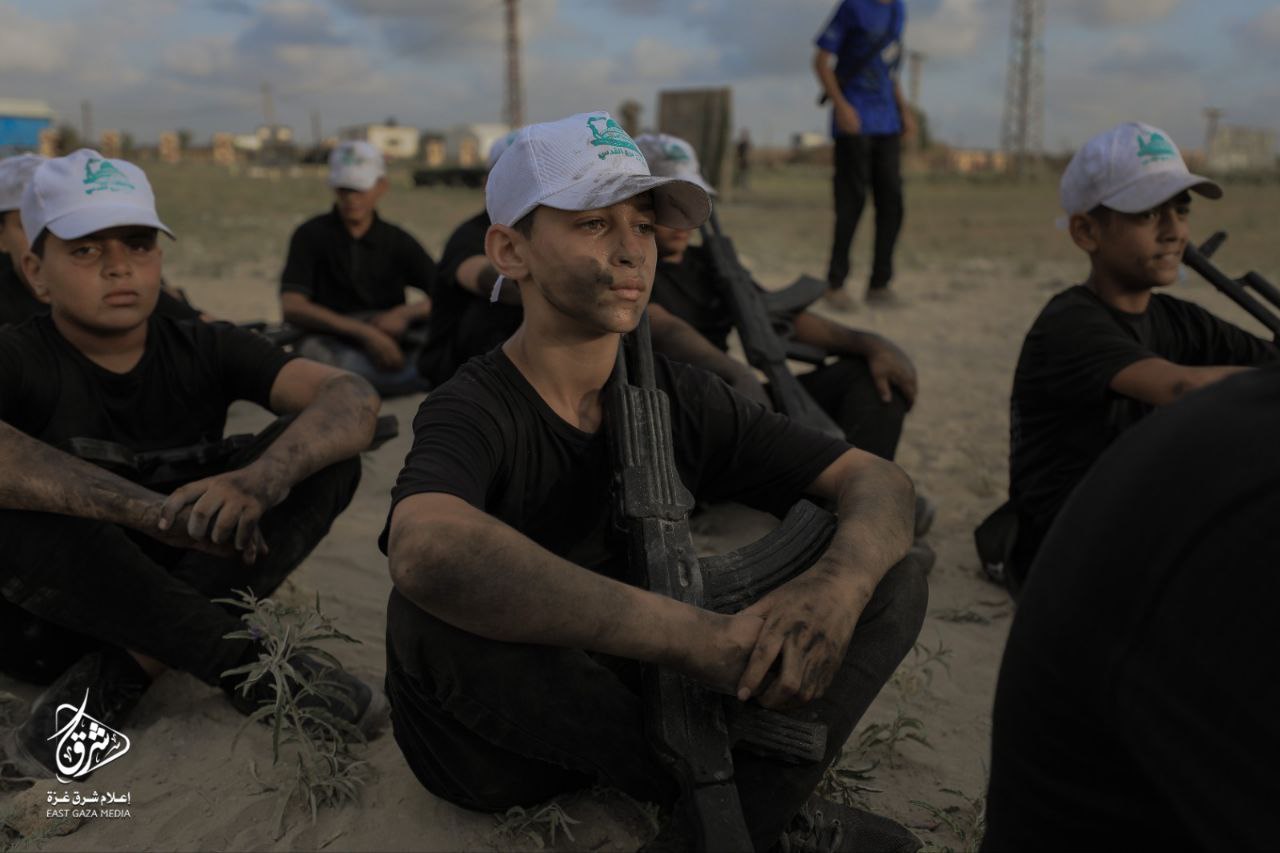Since the signing of the Oslo Accords in 1993, the Palestinian Authority (PA) has waged a campaign against Israel that has repeatedly, systematically, and intentionally violated its commitments under the Accords. The principal reason for the PA’s behavior is its fealty to the narrative of the Palestinian struggle, which includes the goal of establishing at the end of the process a Palestinian state in the entire land west of the Jordan River. However, the PA is also well aware that Israel will not agree to a final settlement that enables the Palestinians to keep striving to achieve their objectives.
Another reason this situation continues, however, is that the Palestinians know Israel prefers to avoid a harsh response to their violations, fearing that such a response would undermine the PA’s stability and its security cooperation with Israel. Additionally, the Palestinians expect their struggle eventually to bear fruit, even if meanwhile they (and Israel) encounter difficulties and disappointments along with achievements and successes.
Israel’s accommodating stance was based for a long time on a combination of willful blindness toward the Palestinians’ true intentions and a belief that making economic and diplomatic gestures, while ignoring most of the Palestinians’ infractions, would bolster more pragmatic Palestinian elements and curtail the terror and the other violations of the Accords. In addition, Israel believed that its placatory approach would soften international criticism. In reality, these hopes were disappointed, and it turned out that their chances of materializing were poor and perhaps nonexistent.
In recent years, most Israelis have overcome their blindness toward the Palestinians’ true aims and realized that the PA is not a partner for peace who will work to ensure Israel’s security and survival. Moreover, partly for that reason, the international community and the Arab world increasingly understand that the chances of reaching a settlement that will stabilize Israeli-Palestinian relations are fading and, indeed, close to zero in the foreseeable future. The political implications of such understandings for Israel’s domestic politics, its links with Arab states, and the Western approach to the conflict are far-reaching: They have seriously weakened Israelis who believed that satisfying Palestinian demands, as they interpreted them, would promote a settlement; the international community, for its part, is not making further attempts to advance such a settlement. Instead, the emphasis is on improving the Palestinians’ quality of life and preserving the possibility of implementing the two-state solution (for two peoples?) sometime in the future.
Even so, many in the Israeli political echelon, particularly in the defense establishment, prefer to stick with the accommodating policy toward the PA and ignore its violations of the Accords. In addition to the reasons already noted, this mindset is fueled by an unwarranted concern about preventing the emergence of a one-state reality.
The new Israeli government is trying to convey the message that it will no longer accept the Palestinian violations and will respond decisively to them. For instance, the security cabinet, in reaction to the Palestinians’ petitions to the International Court of Justice, decided to
- confiscate NIS 139 million of the PA’s funds (which had been withheld as payment of fines levied on the PA in Israeli court for its responsibility for terror attacks during the Second Intifada);
- apply a 2018 law, which deducts the sum of money the PA pays to terrorists and their families from tax revenues Israel collects for the PA, already at the beginning of the year—and without compensation in the form of a bridging loan, which governments had been providing since the law took effect in 2019, thereby emptying it of its content;
- prevent unauthorized Palestinian building in Area C and deny entry permits to senior PA officials involved in the Palestinians’ petition to the court.
- In addition, the defense minister denied such permits to PA officials who visited the freed Israeli Arab terrorist Karim Younis in his home.
- Furthermore, against the backdrop of dismantling the illegal Jewish outpost of Ohr Chaim in Samaria, the government also undertook to dismantle new, illegal Palestinian buildings.
- It then decided to legalize nine Israeli settlements that had been built without authorization and to approve the construction of another 7,000 housing units in existing settlements in Judea and Samaria.
These are indeed stricter measures than previous governments had taken for a decade. Still, there were precedents for them, some of which showed greater resolve. (These included a total freeze on transferring funds to the PA because of its appeals to international bodies during the preceding decade; the abovementioned 2018 law to offset the Palestinians’ “pay for slay” policy; and the extension of Israel’s security activity to PA territory since the Second Intifada). But eventually, even though the PA has not ceased its problematic behavior and has continued to breach the Accords, Israel retracted its measures, preferring the containment policy of shoring up the PA for fear of its collapse.
It is too soon to judge whether the present measures indicate a more substantial change. The decision to deduct the payments the court had ordered to be made to the Palestinian terror victims from the funds already withheld and not from those to be transferred to the PA is an alarming portent of things to come. From the PA’s standpoint, the measure does not create any new economic pressure since the payments were taken from funds it would not have received in any case. Hence, with good reason, this measure can indicate that Israel still seeks to avoid causing too much damage to the PA. In addition, the February 2023 security summit with the PA in Aqaba, with expectations that the PA would bolster its security forces, appears to be a further indication that the Israeli government still has not shaken off the logic of strengthening the PA, or at least preserving it, as a central plank of its policy.
In this way, Israel also managed to temper the international and Arab criticism of its punitive measures. The other steps are easily reversible or hard to monitor. If Israel sticks with them over time and does not compensate the PA for deducting the funds, it will mean it intends to adopt a different policy to convince the PA that it, too, must change its policy. The PA must realize that its current policy of a multifaceted struggle stands no chance of advancing the Palestinian objectives but will incur considerable costs. The hope is that such a change of Palestinian policy could eventually lead to a change in their goals, narrative, and vision, leading to peaceful relations between Israel and a Palestinian entity. Until such time, Israel will have to retain full security control of the land from which the Palestinians operate against Israel. This is especially the case as the PA prepares for 87-year-old Mahmoud Abbas’ inevitable departure from the political stage.
The Palestinian Violations
The Palestinian Authority has violated the stipulations of the Oslo Accords from the moment they were signed. The violations concern the core principles of the Accords and occur in various spheres.
Encouragement of Terror and Involvement in It
Not only does the PA do very little to fight Palestinian terror, as the Accords obligate it to do, but it is derelict in other responsibilities. For example, the PA does not arrest terrorists or systematically prevent attacks, put terrorists on trial, or incarcerate them, nor, when attacks are thwarted, complete the effort with investigations, interrogations, and weapons seizures.
The PA supports terror in many ways. At the top of the list are its huge salaries to terrorists imprisoned in Israel and its monthly grants to the families of terrorists killed due to their activities. The PA devotes about seven percent of its budget to payments to prisoners (about NIS 600 million per year) and families of terrorists killed or wounded (about NIS 700 million per year). The longer terrorists are imprisoned (based on the severity of the loss of life or limb in the attacks), the more significant their payments. The payments are made regardless of organizational affiliation. They are paid to terrorists who are Jerusalem residents and to those who are Israeli Arabs as recompense for every kind of attack, including those the PA had reservations about or even condemned at the time (for example, the 2011 murderous attack on the Fogel family in the Itamar community, in which two parents and three children were murdered in their beds).
The payments to the incarcerated terrorists are paid according to a PA law that calls them the “fighting sector of Palestinian society.” PA chief Mahmoud Abbas repeatedly declares that he assigns these payments the highest priority. Such payments to terrorists, guaranteed in advance, are undoubtedly an incentive to terror, and they make the PA an active partner in the attacks perpetrated by the terrorists who receive these payments. Moreover, many of the terrorists hail from the ranks of official Palestinian security forces or from the Fatah organization, which forms the basis of the PA. For prisoners from among the security services, the period of incarceration in Israel contributes to their seniority, and all the prisoners are promised a very generous grant upon their release and a job in the PA, with the length of imprisonment figured into seniority and the post they receive.
Incitement to Hate, Violence, and Terror
Palestinian messages that deny Israel’s right to exist (delegitimization), show Israelis as loathsome creatures (demonization), or justify and encourage a violent struggle against them, including using terror, are widespread in PA curricula, Palestinian media, statements by senior PA officials, and in Palestinian culture generally, with the endorsement of the PA.
Such messages include, among other things, glorifying terrorists and attributing noxious traits to Jews and particularly to Zionists while accusing them of crimes against humanity. Instead of honoring its commitment under the Oslo Accords to eschew incitement and promote a culture of peace and dialogue between the peoples, the PA, led by Abbas, takes a blatantly anti-Semitic line. The emphasis in recent years is on portraying Israel as a cruel apartheid state and undermining the Zionist narrative by transforming it into the distorted and historically fallacious Palestinian narrative.
Support for a Boycott and Sanctions against Israel, While Denying Its Identity as a Jewish State
In this endeavor, the PA cooperates, among others, with the BDS movement, which seeks to end Israel’s existence and replace it with a Palestinian state in the entire Land of Israel.
Unilateral activity to promote the Palestinian narrative among the international community — The PA engages in this effort while ignoring the PLO’s pledge, as part of the Oslo Accords, that the PA would eschew unilateral activity and international activity in general.
One of the high points in this campaign was the PA’s decision to declare itself a state and its success in promoting a UN General Assembly resolution that recognized it as an observer state. Based on that resolution, the PA joined numerous international organizations, such as UNESCO, and was able to push through anti-Israeli resolutions in all of them. However, not only is this unilateral activity a violation of the accords, but the accords say nothing about the establishment of a Palestinian state as an outcome of the final-status talks, in which the two sides are supposed to reach an agreement through discussion.
Building in Area C without Israeli Authorization — This is being done even though the accords state clearly that Israel alone can authorize building in Area C. In this endeavor, the PA cooperates with the United Nations, the European Union, and many European countries. It totally ignores the fact that the Accords defined Area C as “disputed territories,” not as Palestinian territory.
Including Hamas in elections to the PA institutions, even though Hamas does not meet the necessary conditions—most of all, accepting the accords themselves.
Corruption and Neglect of the Palestinian Residents’ Needs
Those needs are subordinated to the anti-Israeli struggle and the personal interests of the top PA officials.
Recently the PA also unilaterally halted the security coordination with Israel — a measure it had already taken in the past.
In addition, the PA Is working to persuade Israeli Arabs to act in its interests and adopt the narrative of the Palestinian struggle against Israel. As part of this effort, the PA pays salaries and stipends to Israeli Arab terrorists and their families, expresses support and glorification of these terrorists, and works to prevent normalized relations between Israel and Arab countries.
The Palestinian Narrative
The Palestinian narrative, which the PA inculcates among the Palestinians and disseminates to the international community, comprises seven tenets, most counterfactual and some anti-Semitic.
First, there are no Jewish People; therefore, Jews have no right to a state of their own.
Second, throughout history, Palestinians allege, there has never been Jewish sovereignty in the Land of Israel—unlike the Palestinian people, with its ancient and historical roots in the soil of Palestine. Therefore, a solution for the Jewish problem should not be situated in this land, especially since the Ashkenazi Jews are not descendants of the Jews who lived in the Land of Israel in the past but of the Kuzaris, according to this myth.
Third, the Jews, in general, and the Zionists, in particular, are intolerable creatures, which is why the Europeans tried to get rid of them. This is clearly and undeniably reflected in the cruelty and arrogance of the Zionist policy toward the Palestinians, which has comprised “50 Holocausts” and an “apartheid regime.”
Fourth, as those who have suffered the expulsion, the deportations, and all the Israeli measures against them, the Palestinians are the only victims of the Israeli-Palestinian conflict. As long as they have not achieved their goals and overcome the injustice done to them—for example, through the return of the refugees—they must create worldwide awareness of their suffering. Therefore, the Palestinian media daily and intensively propagates a distorted picture of Israeli cruelty toward the Palestinians in Judea, Samaria, and Gaza, in the prisons and the refugee camps, and even toward the Israeli Arabs. As victims of Israel and the West, the Palestinians have the right to use all means to advance their objectives, including terror, and their critics have no right to criticize them for it.
Familiar aspects of this distortion of history include, for example, minimizing the Holocaust; obscuring the Palestinian support for the Nazis, led by Hajj Amin al-Husseini; spreading falsehoods about the relations between the Zionist movement and the Nazis, as Abbas did in his doctorate; and characterizing Israel’s policy toward the Palestinians as a Holocaust no less and perhaps even more horrific than the one the Nazis inflicted on the Jews. The Palestinians believe they must counteract an Israeli plot to portray the Jews’ suffering in the Holocaust not only as worse than what the Palestinians experienced but as a case that is relevant to the conflict since it justifies the establishment of a Jewish nation-state in Israel/Palestine. In the Palestinians’ view, they must fight this to the bitter end.
Fifth, in light of all these considerations, the Palestinians are committed to a multifaceted struggle against Zionism until it is defeated. Abbas wrote in his book Zionism—Beginning and End, “Undoubtedly, the Palestinian struggle in cooperation with anti-Zionist Jewish elements will bring about the defeat of Zionism and enable the Palestinians to live again in tranquility in their land.” This struggle can take the form of diplomatic and economic efforts, clinging steadfastly to the land, “civil jihad” to improve the Palestinians’ status (as Member of Knesset Mansour Abbas called it), and violent activity. Such activity encompasses—in line with the cost-benefit calculations at any particular time—popular agitation, that is, violence without the use of firearms and explosives, which Abbas has long preferred, but also the frequent use of weapons, as favored by the more extreme organizations such as Hamas and Islamic Jihad. Recently Fatah and unorganized elements have been using weapons as well.
In the PA’s eyes, all forms of struggle are legitimate. Despite attempts to persuade him otherwise, Abbas has asserted that he will keep paying salaries to all the terrorists imprisoned in Israel and all the families of terrorists who died due to their attacks. Furthermore, Abbas has recently come out more explicitly in favor of the possible use of weaponry in the fight against Israel. He has even openly supported the armed struggle. In the background is the growing frustration over the Palestinian issue’s marginalization in the regional, international, and Israeli agendas, alongside the PA’s growing weakness on the domestic front, which, in Abbas’s view, requires it to identify with more extreme Palestinian elements committed to the narrative of the struggle.
Sixth, the Palestinian struggle is national and Islamic, and the two elements are fused. Hence Israel’s purported infringement of the sanctities of Islam, with emphasis on the Al-Aqsa compound, is seen as reflecting the dangerous nature of Zionism. Portraying the struggle as representing the national component, that is, the Arab nation to which the Palestinian people belong, has been made much more difficult by the Abraham Accords. The Palestinians, however, refuse to come to terms with the significance of that development.
And seventh—even if, at this stage, given the current inability to reach the final objective of vanquishing Zionism, a settlement must be based on an independent Palestinian state on the 1967 lines whose capital is east Jerusalem, alongside Israeli acceptance of the principle of the right of return—Israel must in no way be accepted as the nation-state of the Jewish people. That would entail renouncing the ultimate objective of liberating all of Palestine as the culmination of the “phased plan.” Hence, for now, the Palestinian objective is the two-state solution—but not two states for two peoples, one of which is the Jewish people (which, as mentioned, does not exist).
Israel’s Policy toward the PA
In light of all this, why is it so essential for Israel to strengthen Mahmoud Abbas and the PA he heads? This question is even more acute because Israel is reinforcing a leader and an entity that is not only hostile toward Israel and committed to fighting the Jewish State but is weak domestically. If so, there is no guarantee that Israel’s assistance will benefit them. They can probably manage, and perhaps even better, without Israel’s help, which casts them as collaborators with those they define as an enemy. (Indeed, when in 2020, the PA, on its own initiative, stopped accepting the revenue payments from Israel and halted the security coordination, its functioning was not harmed at all.)
The answer lies in Israel’s, and particularly its defense establishment’s, adherence to the status quo. Even if no one loves it, and indeed no one planned it, it is the reality produced by the actions of both sides in the Israeli-Palestinian conflict and also of international actors, namely, the Arabs and Iran. It is doubtful whether anyone has enough incentive to bear the costs of trying to change it, even if the Palestinians and some in the new Israeli government proclaim their desire.
Indeed, it is not even truly a status quo since reality keeps changing, and certain likely developments in the foreseeable future will probably accelerate the pace of change. One is the formation of an Israeli government with a distinct ideological line that has no precedent in Israel and differs entirely from former governments with their deep commitment to maintaining the status quo. The second is the contest over control of the PA, amid expectations that Abbas will soon exit the stage. The third is the growing pressure on Hamas, which is restrained and deterred at present, to demonstrate its commitment to its jihadist identity not just in words and rallies but also in deeds and not just in attempts to carry out terror attacks in Judea and Samaria. The fourth is the growing Palestinian unrest, fueling the spike in terror attacks.
In recent years, reflecting fears of an escalation, the Israeli government’s approach has combined fighting terror, deterring Hamas, buttressing the PA, and improving the Palestinians’ quality of life. Those governments were willing to live with the diplomatic pressure the PA mustered against Israel while seeking to strengthen and expand the Abraham Accords. At present, it is quite clear that the logic behind this approach has not proved itself, but rather the opposite.
Over the years, Israel invoked several reasons and pretexts for the policy of strengthening the PA. These were said to reflect realpolitik and the choice of the lesser evil. But, the defense establishment is sorely mistaken in justifying its advocacy of aid to Abbas because he opposes terror. As we have seen, Abbas does not fight Palestinian terror but, instead, sees it as a legitimate part of the multifaceted struggle to achieve liberation and Palestinian national objectives. At the forefront of those is a Palestinian state in the ‘67 territories, whose capital is Jerusalem, without recognizing Israel as a Jewish state. At present, Abbas regards certain kinds of terror, primarily involving firearms and explosives, as more costly than beneficial to the Palestinian struggle and hence prefers to eschew them at this stage. But the cost-benefit calculation could change, as Abbas has explained in some recent statements. When that happens, he will probably revert to backing that kind of terror. As noted, many of his associates and representatives of the organizations he heads are already expressing support for the shooting attacks in Judea and Samaria, not a few of which are perpetrated by Fatah members.
Second, Israel acts based on an assumption (also groundless) that absent Israeli support, the PA could collapse at any moment and that the alternative to the present situation would likely be worse. Yet, while the PA indeed needs help asserting its authority in the security sphere in some of the territories it holds, it is not in danger of collapse and continues to function in the civilian spheres. Once Abbas leaves the scene, chaos could erupt, necessitating a temporary Israeli takeover of the PA lands. However, it needs to be clarified to what extent Israeli efforts to boost Abbas can avert such a scenario with its various ramifications. Those include succession battles within Fatah, a fragmentation of the PA into the regions that now compose it, and an attempt by Hamas to exploit the situation. At the moment of truth, there is no guarantee of an orderly transition or, eventually, of continued control by Abbas’s putative successors—the secretary of the PLO Executive Committee, Hussein al-Sheikh, and the commander of the security mechanisms, Majid Freij.
In line with the current conception, however, Israel sees the PA as a convenient tool that exempts it from closely administering the lives of the Palestinian population of Judea and Samaria, which is perceived as a heavy and undesirable civil, economic, and security burden. From the defense establishment’s standpoint, the PA is essentially an effective arm of the Civil Administration, providing education, health, and the rest of the governmental and economic services for the Palestinian population. The better it can fulfill that role, the better it will serve Israel’s ends.
Third, the coordination with the PA’s security mechanisms is perceived as contributing to Israel’s security. The defense establishment usually exaggerates the value of this coordination, since the PA acts only against the terror operatives that challenge it and Fatah. It does not act against all the terror operatives in its territory, and it even encourages them, as noted, by paying high salaries to terrorists imprisoned in Israel and portraying terrorists as exemplary, praiseworthy figures. At any rate, the security coordination ensures that the PA forces do not interfere with Israel’s counterterror activity and arrests within the PA. Most members of the forces and a portion of the Fatah members do not actively take part in the fight against Israel. They also rescue and return Israelis who stray into dangerous situations in PA territory and operate against elements threatening the PA itself, thereby restraining Hamas.
Fourth, Israel’s working assumption is that improving the Palestinians’ quality of life through the PA dampens their inclination to encourage and perpetrate terror—though that assumption, too, has no solid basis. The Palestinians indeed desire a better quality of life. The terror, however, does not stem from feelings of economic distress but from commitment to the narrative of the struggle against what is described as Israeli colonialism that uses apartheid methods against the native Palestinian population. The PA continues to promote this narrative whether or not Israel aids it, and the unrest among Palestinian young people, which leads to their involvement in terror, continues despite all efforts to improve the population’s living standards.
And fifth, the international community, with the United States, Egypt, Jordan, and to a certain extent, the partners to the Abraham Accords at the forefront, expects Israel to pursue this approach and fortify the PA. Such an Israeli policy, in their view, justifies relegating the Palestinian issue to the margins of the international and Arab agenda, keeps Hamas in check, promotes the Palestinians’ quality of life, and builds an infrastructure, they believe, for the future implementation of the two-state solution—that is, the establishment of a Palestinian state on the 1967 lines with east Jerusalem as its capital.
To all these, in recent years has been added the illusory notion, blown up out of all proportion, of the threat of a single binational state, which would compel Israel to give up one or the other of the two components of its identity since it would be unable to remain both Jewish and democratic.
The PA will not disintegrate of its own volition. The Palestinians regard it as the most outstanding achievement of their national struggle and as the basic infrastructure for the future Palestinian state, even if they have much criticism of its rampant corruption and are repelled by its leadership. It is also the largest employer of the Palestinians. Israel, for its part, will never agree to a binational state that would nullify its identity as a Jewish and democratic state. The PA, and the Gaza entity led by Hamas, have long been the political and administrative entities responsible for managing the Palestinians’ affairs, apart from aspects that directly affect Israel’s security. This reality is not going to change whether or not Abbas is strengthened. Even if, after his departure, the PA collapses amid a Palestinian civil war, almost all the Palestinian factions will share the aim of reestablishing it.
Israel, then, faces a dilemma. The more that the problematic attributes of the PA and its leader become evident, stemming as they do from their hostile and anti-Semitic narrative, the harder it is to justify an ongoing friendly dialogue with the PA and its senior advisers, such as the relationship the previous defense minister, Benny Gantz, maintained, as well as the continued aid to the PA. Nevertheless, the Israeli defense establishment and government are committed to the problematic justifications for sustaining that dialogue and that aid. The main concern is to prevent, or at least defer, a violent outbreak in the near term, and Israeli officialdom believes that bolstering the PA contributes to that goal. One can only hope for a frank discussion between the political echelon, which does not want an escalation but sees the broader picture, and the security services, convinced of the need to focus on short-term considerations.
This mindset was evident in the decisions of the new government’s security cabinet, both in response to the Palestinian initiatives in the international arena, particularly the appeal to the International Court (ICJ) of Justice in The Hague, and to the severe terror attacks in Jerusalem on January 27 and 28, 2023, in which seven civilians were murdered—and, in addition, on the question of evacuating the Bedouin shantytown of Khan al-Ahmar on the strategic highway between Jerusalem and Jericho. The cabinet adopted some decisions reflecting a willingness to take a tougher line toward the PA. These included deducting, on the date specified, the total sum of about NIS 600 million that the PA paid to terrorists in 2022, using NIS 139 million of that sum to compensate families of terror victims, whom an Israeli court had ruled the PA was to compensate; greater determination to dismantle illegal Palestinian buildings in Area C; and denying entry permits to Israel to senior Palestinian officials involved in the turn to the ICJ. Later, permits were denied as well to officials who came to congratulate the freed Israeli Arab murderer Karim Younis and glorify his acts.
As noted above, however, these decisions have a limited significance that does not deviate from previous governments’ policies. The continued evasion of the Khan al-Ahmar issue is a clear example. The only real difference is that the new government apparently will not compensate the PA for the deducted funds with a special loan.
Abbas, too, confronts a difficult dilemma. He is not prepared to settle for the role that Israel, in his view, accords him as its chief executive of the civil administration in Judea and Samaria. From his standpoint, the mission of the PA is to advance the Palestinian national objectives in line with the Palestinian narrative, not just to improve the situation in the civil, economic, and security spheres as Israel and even the United States seek. Abbas hopes at this stage to buy quiet and scale down the conflict by improving the Palestinians’ quality of life, a task mainly to be delegated to the PA. Hence, Abbas may opt for an escalation, especially if he can pin the blame on the “extremist Israeli government” and thus recruit the international community to his side. His experience, however, has shown him (unlike harshly critical young people who did not experience the Second Intifada) that, while it is easy to incite, it is hard to foresee how a conflict will develop. Despite the temptation, then, he is likely to show caution.
Given the new government’s outlook, it would probably like to make a far-reaching change in the status quo. In light of the complex reality, however, it also recognizes the limits of its power and will refrain from applying Israeli law to the disputed Area C. It appears, however, that it will take some measures that have the potential to inflame passions (such as legalizing the outposts of the young settlements and the Israeli presence in the once-evicted Homesh and Evyatar settlements; cracking down on illegal Palestinian building in Area C; providing easy terms for the Israeli settlers that could boost the incentive to live in the territories; and increasing construction in the existing settlements) and will rethink the determination to shore up the PA at any price. In contrast to its predecessor, the new government will likely inform Abbas that there is a price to be paid for hewing to the mendacious and antisemitic narrative that he pushes and for continuing to support terror—for example, by paying the salaries to the jailed terrorists. The government will continue to fight hard against the terror infrastructure in the PA and respond to radical Palestinian towns under the violent rule of Hamas and the Palestinian Islamic Jihad. The current Israeli government will probably stick with the previous government’s policy toward Gaza as long as Hamas keeps reining in terrorism. Still, it may show greater resolve toward Hamas if it does engage in terror. On the sensitive issue of the Temple Mount, Netanyahu will probably avoid a fundamental change in the status quo. However, he may find himself challenged by more extreme elements in his government.
Conclusion
In summary, even if the PA as a framework contributes to the ability to live with the ongoing conflict, manage it, and prepare the ground for a peace settlement, the content that fills the framework is problematic. The Palestinians should be encouraged to change it so they will eventually accept Israel’s existence as the democratic nation-state of the Jewish people. The more the Palestinians can be convinced that their chances of achieving their far-reaching aspirations are receding, the more a gradual improvement will be possible.
The Israeli voters’ shedding of illusions about the Palestinians led to the formation of a right-wing government determined to counteract the Palestinians’ ongoing anti-Israeli activity in the different spheres, particularly regarding terror and land seizures. That development should help clarify this message to the Palestinians. The reduced interest in the Palestinian issue among the international community, which is occupied with other problems, should help as well, and the trump card in this context is supposed to be the effort to add Saudi Arabia to the sphere of normalization.
At the same time, those elements in the Palestinian population that are not promoting the problematic narrative and not involved in terror should be encouraged to use measures that will improve their quality of life and will not compromise, to the extent possible, the ability to deal with security risks. This would be an alternative to offering such measures as gestures to the PA even as it is committed to that narrative.
Indeed, the votes in the Palestinians’ favor in the United Nations, the European support, the mobilization of the American left, and the sympathetic atmosphere in parts of the Arab world, together with domestic and foreign criticism of the Israeli government in the Palestinian context, will be seen by the Palestinians, along with terror attacks, as reasons to keep believing they can achieve their goals and to adhere to the narrative of the struggle. Those factors will also highlight the difficulty of attaining the Israeli objective.
Nevertheless, Israel must keep pursuing that objective and seek to apprise its friends of the problems entailed by continuing the current situation. That is all the more the case as the Mahmoud Abbas era nears its end, and many of the “day after” scenarios will require Israel to address those problems with special urgency.
